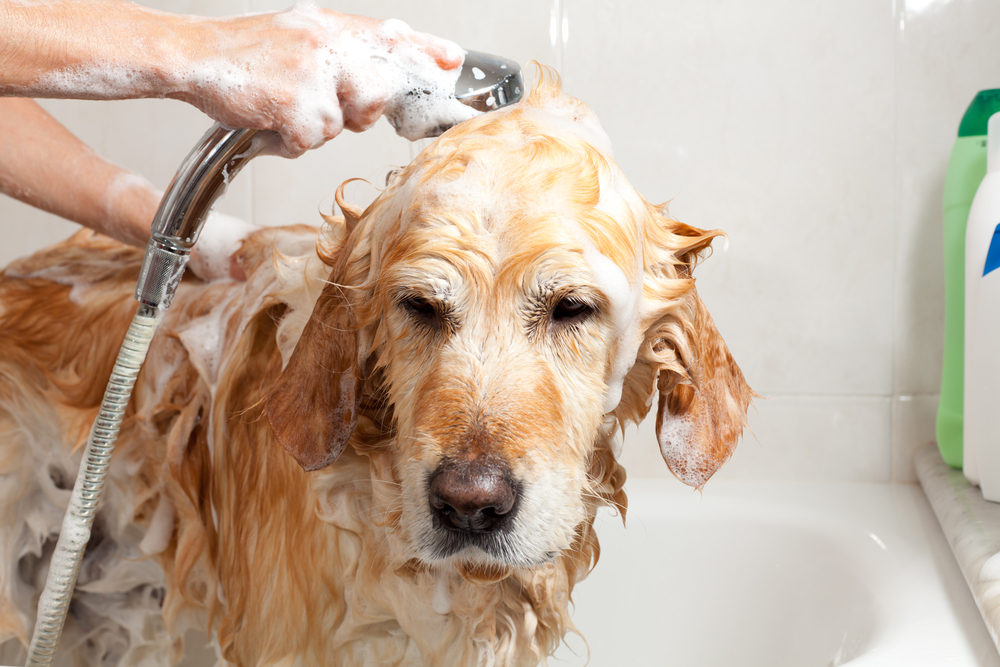When it comes to caring for a dog or cat, most pet owners know the basics of diet and exercise. But, just as it’s important for humans to have wellness routines that include things like eating balanced diets and regular teeth cleanings, it’s crucial for your furry friends, too. We’ve partnered with Purina Pro Plan SIMPLY FIT to bring you some helpful advice on how to help keep your loyal companions healthy and happy. To help us do that, we called on Dr. Amy Farcas, a veterinary nutritionist, to share the tips she thinks all pet owners should know.
Keep Your Pet At A Healthy Weight
“If there is one thing I can tell [clients] to do to improve the lives of their pets, it is not to allow them to get fat,” Farcas said. “There are a lot of different perceptions about what ‘ideal’ is for certain breeds, but often times, those perceptions are wrong.”
To create a standard for ideal body condition, veterinary nutritionists developed a body condition tool. This scale is used to determine if your pet is at an ideal body condition. It goes from one to nine, one being too thin and nine being too heavy. For dogs, four to five is considered ideal, and for cats, it’s five. It’s important that owners evaluate their pets’ body condition regularly.
Dr. Farcas also points out the benefits that can come with maintaining an ideal body condition, like extending your dog’s healthy years. According to a canine lifespan study that was conducted over 14 years, feeding dogs to maintain an ideal body condition throughout their lives can help extend their healthy years by an average of 1.8 years.
Feed Your Cat Or Dog A Balanced Diet
While it may seem like your pet is eating enough food, unless it’s a complete and balanced diet, he might not be getting all the nutrients he needs. According to Dr. Farcas, ″Dogs and cats have requirements for around 40 different essential nutrients: proteins, amino acids, fats, fatty acids, vitamins and minerals.”
These nutrient requirements can be met when feeding your pet a nutritious food in the right caloric amount based on the weight of your pet.
“Keep in mind that even if we are thinking about things that are healthy, like chicken breast or vegetables, they still don’t provide all of the nutrition that a pet needs in the item itself,” Farcas said, adding that it’s best to do research to find the food that will meet your pet’s needs.
When calculating the daily calories for your pet, it is also important to take into account the extra calories from treats. It’s recommended that treats only make up 10 percent of a dog or cat’s daily calorie intake.
Brush Your Pet’s Teeth
“A great way to keep a pet’s teeth healthy is to brush them and follow your vet’s recommendations for other treatments,” Dr. Farcas said. “Toothbrushing gives you the opportunity to check routinely for problems like redness of the gums and broken teeth. Relying on treats to clean teeth is not a substitute for routine dental care.”
Dr. Farcas further explained that small dogs can benefit from a regular oral hygiene routine, which may result in less tooth extractions down the line. Large dogs, on the other hand, aren’t as prone to dental conditions, but can be aggressive chewers.
“They can actually break their teeth when chewing on bones, antlers or rocks, so I advise against using these items to keep teeth clean, because you might just have clean broken teeth,” she said.
Keep Your Pet Active
Different breeds need different amounts of exercise — some will want more vigorous activity, for instance — but you’ll want to make sure that your pet is staying active either way.
“Sometimes pets have limitations as to how much physical activity they can do,” Dr. Farcas explained. “But it is good for pets for a lot of reasons to have as much exercise as they can tolerate. It is good for them physically, mentally and behaviorally. We see less destructive behavior in animals that exercise and aren’t always looking for something to do; that includes cats, as well.


Leave a Reply